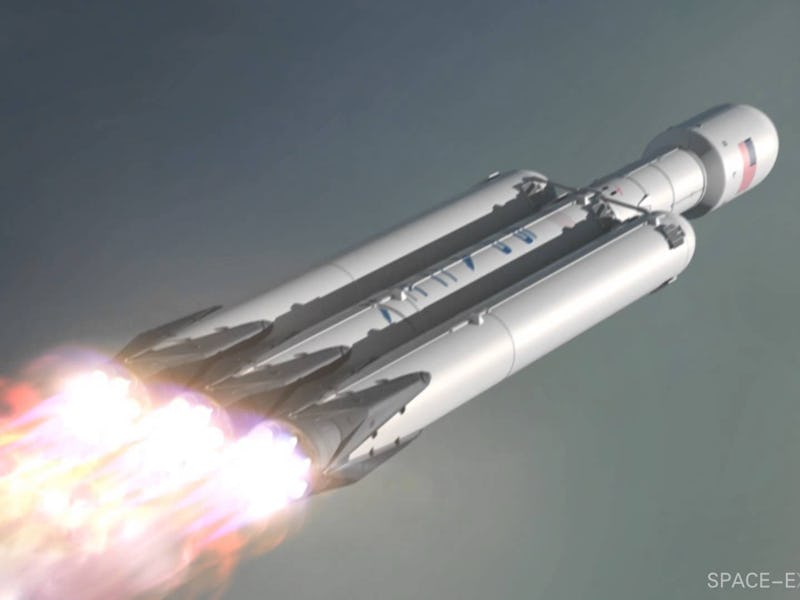Falcon Heavy: SpaceX Reveals Plans to Perfect Core Recovery for Next Launch

SpaceX is planning to get a better grip on its rockets the next time it tries to recover a Falcon Heavy booster, the company tells Inverse. The world’s most powerful rocket with more than five million pounds of liftoff thrust, saw its first-ever commercial launch last week. A process to recover the three cores and save money on the next flight hit trouble on the stormy seas.
“Over the weekend, due to rough sea conditions, SpaceX’s recovery team was unable to secure the center core booster for its return trip to Port Canaveral,” SpaceX spokesperson James Gleeson tells Inverse. “As conditions worsened with eight to ten foot swells, the booster began to shift and ultimately was unable to remain upright. While we had hoped to bring the booster back intact, the safety of our team always takes precedence. We do not expect future missions to be impacted.”
The issue stemmed from the “octograbber” normally used to hold the booster in place on the drone ship. When a core lands on the ship after a launch, this machine helps secure it to safely move back to land. Unfortunately, the system was not employed on this mission as the Falcon Heavy center core has a different mechanical interface to the Falcon 9 cores that normally land on the ship.
The company tells Inverse that it plans to use the system for its next recovery attempt. When this will occur is unclear: the company lists a number of upcoming missions on its website, including contracts with the United States Air Force, but none of these have confirmed timetables.
CEO Elon Musk confirmed via Twitter that the system was not used because it wasn’t ready ahead of last Thursday’s launch:
The launch was the first major outing for the Falcon Heavy, following a test launch when it sent Musk’s red Tesla Roadster into space with a spacesuit-equipped “Starman” in the front seat on a trajectory for Mars. Thursday’s launch at 6:36 p.m. Eastern time sent up the Arabsat-6A communications satellite from Launch Complex 39A at the Kennedy Space Center in Florida.
Eight minutes after the rocket’s launch, the side boosters simultaneously landed on two land-based pads dubbed Landing Zones 1 and 2. Around 10 minutes after launch the center core landed on the Of Course I Still Love You drone ship in the Atlantic Ocean.
The successful landing of the central core made a change from the February 2018 flight, where it missed its target by 300 feet and hit the ocean at 300 mph. The problem with that launch was the team could only light one of the three necessary engines for re-entry. The crash sent shrapnel across the ship’s deck and destroyed two thrusters.
Although the booster suffered a rough ride this month, Musk seemed confident that it could fly again:
The company also confirmed that the side boosters and the fairing are currently in processing for use on a future mission.
Recovering rockets is a key aspect of SpaceX’s plan to bring down the costs of space travel. Sending up satellites for cheap may get commercial partners on board, but the company’s most impressive days could come later as it continues development of the Starship, a stainless steel behemoth designed to transport humans to Mars and kickstart a new space colony.